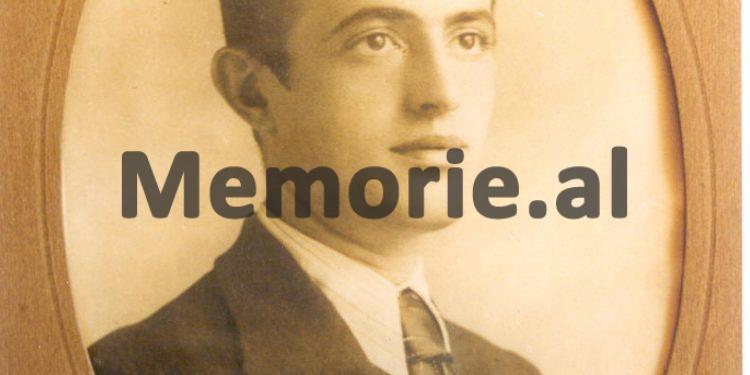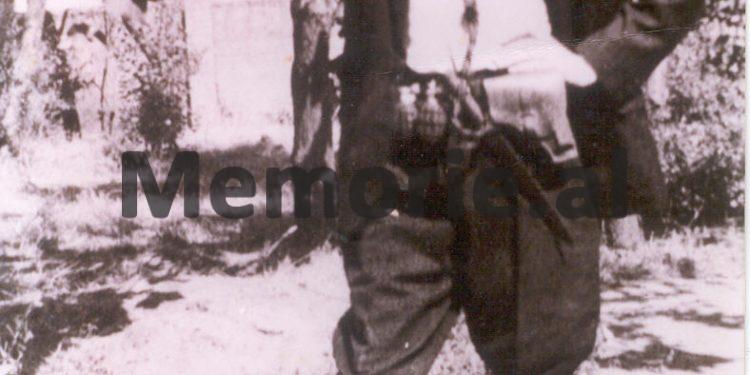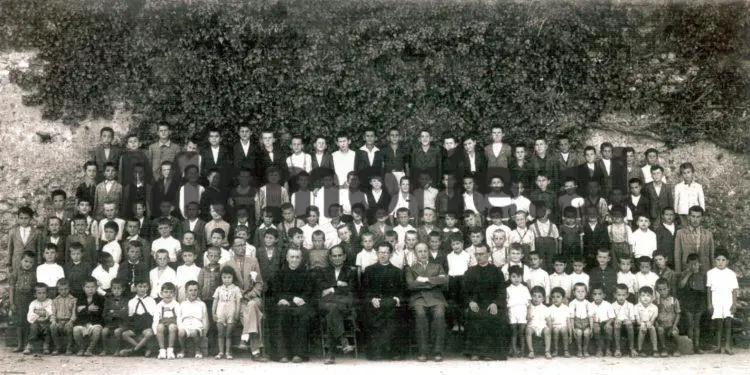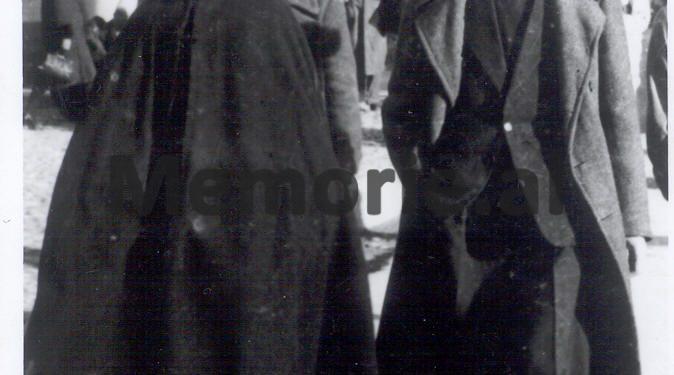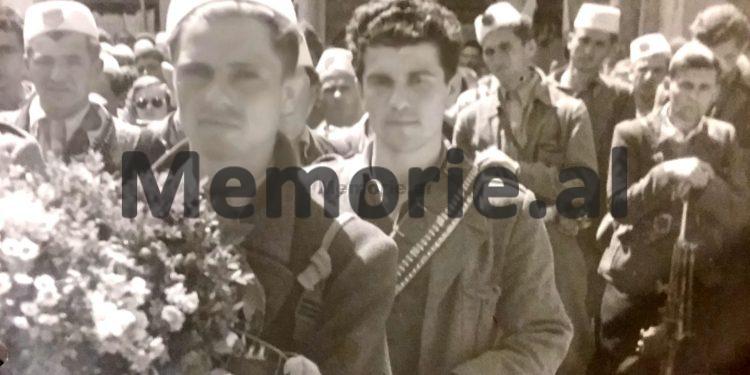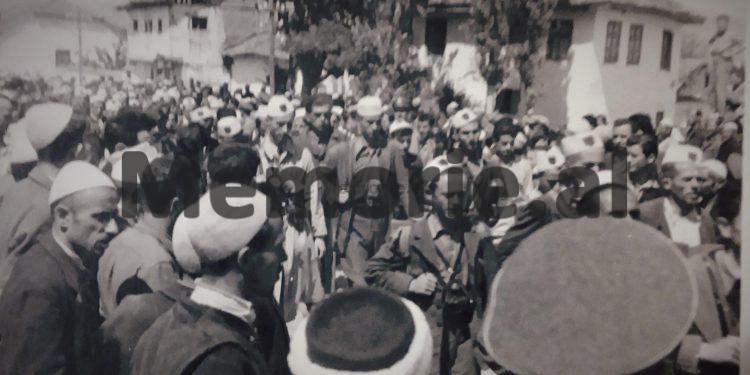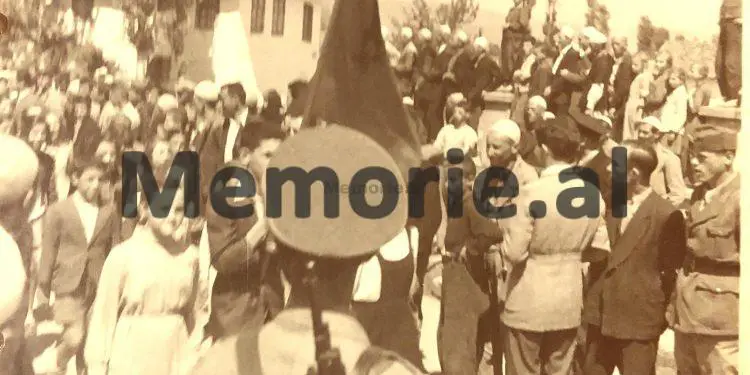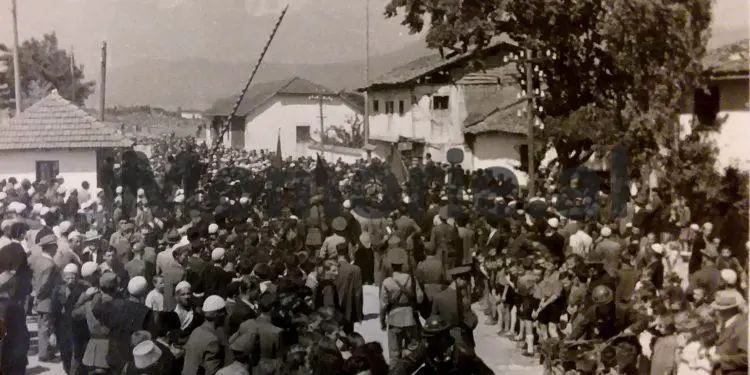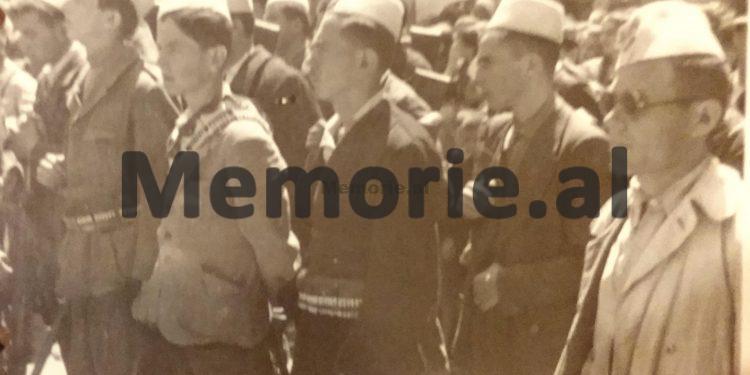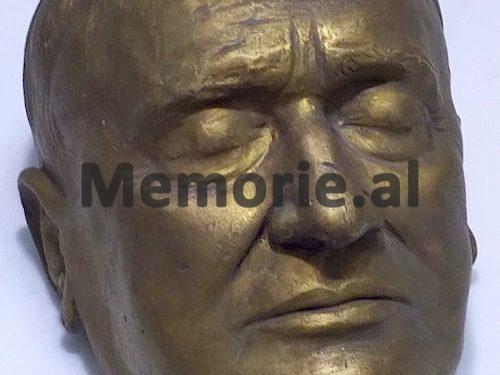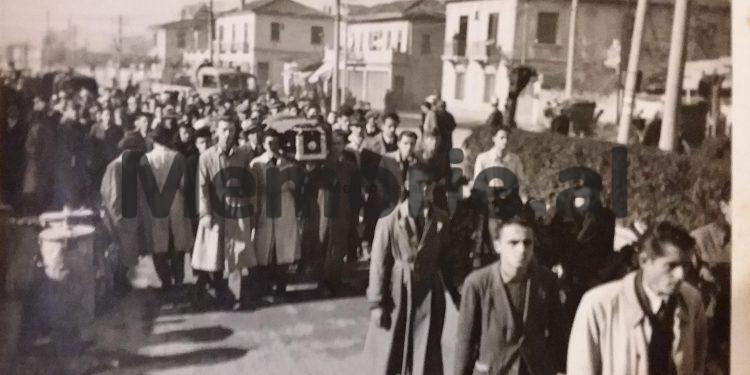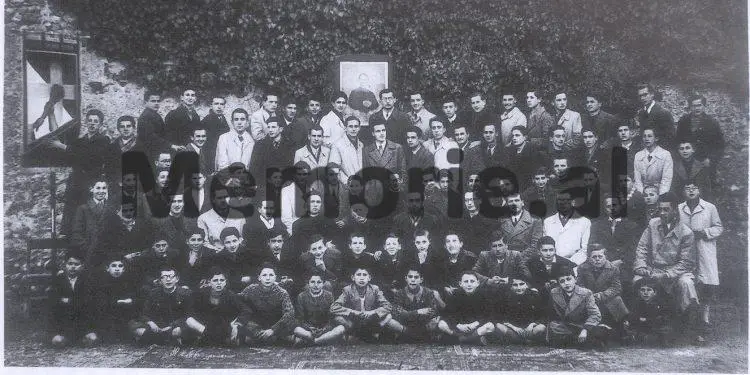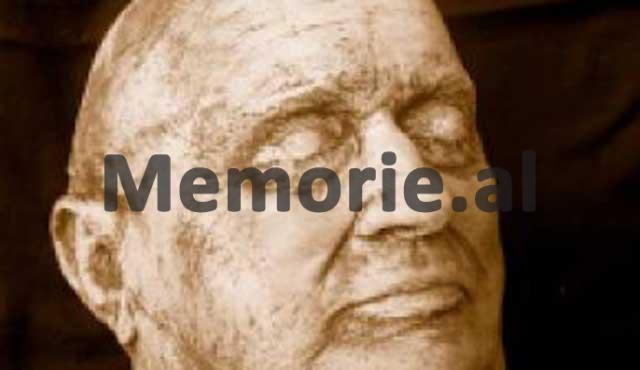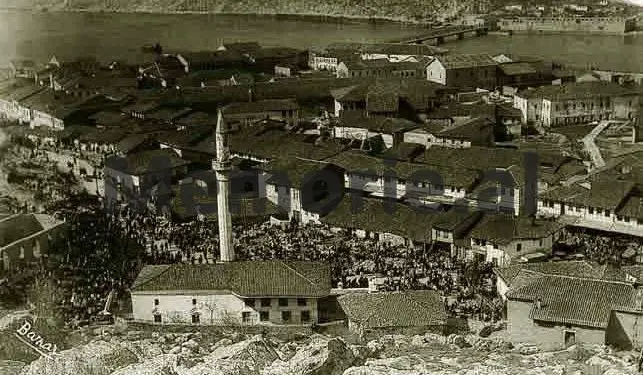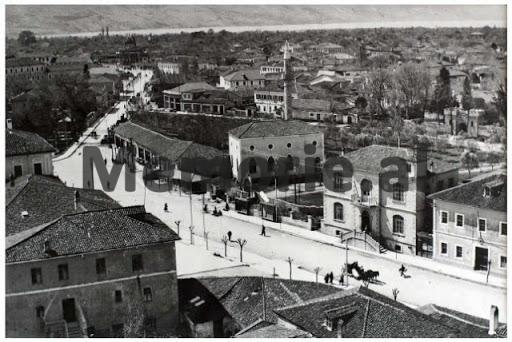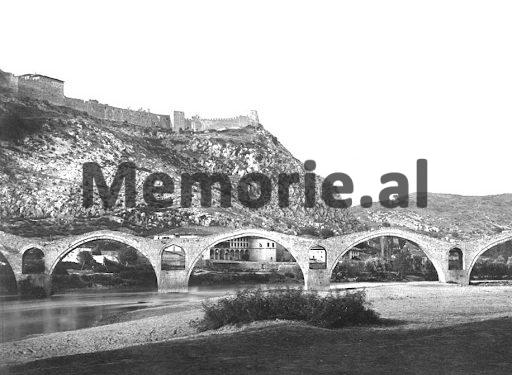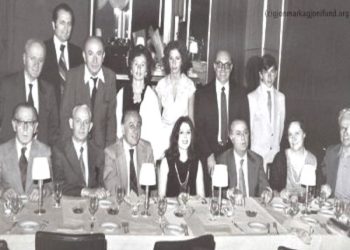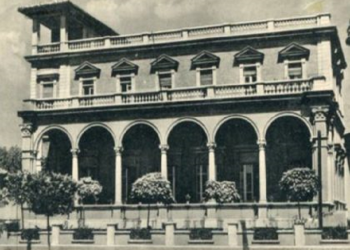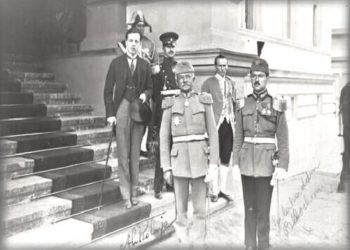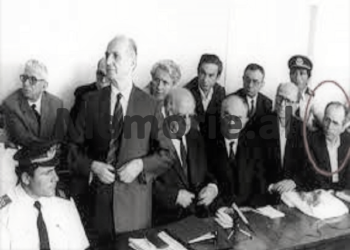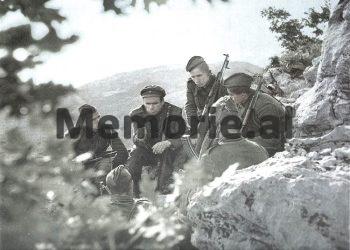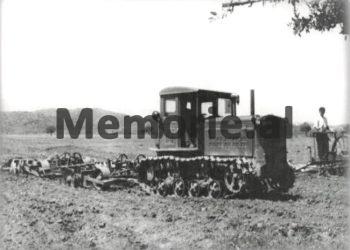Dashnor Kaloçi
Memorie.al publishes the unknown story of Tom Leci from the city of Shkodra, who was educated at the Franciscan Friars College in that city where he stood out for his tendencies in painting, sculpture, music, literature, etc., in the extracurricular circles organized by the Society. “Antonjane” and that “Bogdani” of the Catholic Church, where he won a poetry competition with the poem “Thoughts and oil” winning a series of pennies. Thomas’ engagement during the period of occupation of the country in the Anti-Fascist Movement, being part of the nationalist youth organization of Balli Kombëtar, where he after participating in several anti-fascist demonstrations where he was wounded in the leg, in July 1944, was effective. two battalions, “Qeramudin Sulo” and “Besnik Çano”, which went and fought in Kosovo against the Chetnik forces of Drazha Mihajlovic. Toma’s arrest in 1947 as a member of the anti-communist organization “Albanian Union”, and his sentence of 10 years in prison, after being barbarically tortured in the cells of the Shkodra prison. How could he be released in 1951 due to his health condition and wandering for 20 years in semi-paralyzed hospitals, going through the whole period of the communist regime of Enver Hoxha?
“In one of those anti-fascist demonstrations on February 22, 1942, even though I was wounded in the leg, I did not back down from the nationalist ideal we had embraced and participated again in some demonstrations and other anti-fascist activities, such as that of On July 26, 1943, in Shkodra, where the youth leader of Balli Kombëtar, Mustafa Dervishi, was killed, in the meeting organized in the cinema “Rozafa”, in the action of placing the memorial plaque on the occasion of Mustafa’s fall, on the occasion of incursions that we undertook in Kosovo with the two youth battalions of Balli “Besnik Çano” and “Qeramudin Sulo”, where our friend Hamit Troplini was killed, in the organized meeting with the Zogists in Gruemirë on September 21, 1944, and in some other meetings where Mit’hat Frashëri himself and the English missionaries, Major Neels, and Captain Hiberding assisted. This is how he remembered his time and his commitment to the nationalist forces, Tom Leci from the city of Shkodra, one of the exponents of the youth of the National Front of that city, telling us the vicissitudes of his life, from the war period to the collapse of the communist regime in 1991.
Who is Tom Leci?
Tom Leci was born on December 21, 1923, in the city of Shkodra is a family very well known for its patriotic traditions. Their early origin is from Berisha of Kosovo, and Toma’s grandfather, Mark Kola, was one of the patriots of that time who participated in the League of Prizren in 1878, and as a character, he would stand out in Gjergj Fishta’s poem “Lahuta of the Highlands ”. The father of the tomahawk, Lec Marku, continued the tradition of his ancestors, practicing the craft of blacksmith and blacksmith, for the insurgents of the League of Prizren. Leci was a true artist in iron processing and his works are still remembered and preserved in many old Kosovar houses. Tom Leci’s mother was called Shaqe, and she was a noblewoman who played a major role in his upbringing since Thomas was young. Toma received his first education in his hometown of Shkodra, studying partly in the elementary school “Dugajeve e Reja”, and then his education continued at the College of Franciscan Sisters, where his teachers noticed his inclinations for music. , painting, and sculpture.
At the College of Sisters
At that time, Thomas was enrolled in the Antonyan Society of the Catholic Church (patriotic religious society), where he began to excel in poetry, painting, sculpture, and drama. In this regard, Tom Leci recalled: “At that time in the school of the Friars where we studied, there was a competition where all the students of that college participated with their best creations. At the end of that competition, the jury that was together with the best professors of literature thought to give me the first place for the poem “Thoughts and oil”. According to the tradition of that time, I was given a serum feather, which I still keep as the most expensive thing. In that period, after that activity that took place in the genre of poetry, I participated in several other cultural activities that took place by the “Antonjane” Society and the “Bogdani” Society, where I played over 50 main roles “, Toma recalled. . In addition to poetry and dramatic art, the young Tom Leci became active in the music band of the city of Shkodra, led by the famous conductor Preng Jakova. He also practiced painting, working on easels and canvases with carbon, watercolor, tempera, and oil paint. Many of the works that Toma carried out at that time were kept in his house, but during the communist regime, she was raided several times by the State Security, causing most of them to be lost without a trace. But despite those vicissitudes, Toma has been able to preserve some of his youth works, such as some portraits made for some prominent patriots, such as Hafiz Dërguti, Gaspër Suma, Pal Doda, Dedë Gjo Dashi, etc. There are also some sculptures in his house, which survived the raids thanks to their small size.
Balli exponent in Shkodra
Like many young people with nationalist convictions, Tom Leci was one of those who angrily welcomed the fascist invasion of Albania on April 7, 1939. From the first days of April, he joined the well-known anti-fascist youth group in Shkodra, called “November 28”. Apart from him, Ndoc Jakova, Injac and Luigj Toni, etc. also militated in that group of young people from Shkodra. In 1942, the whole group joined the Balli Kombëtar nationalist youth groups, an organization led by Lec Kurti in the Shkodra region. In this regard, Tom Leci testified: “On the occasion of our membership in the nationalist organization Balli Kombëtar, on April 28, 1942, we have distributed the membership documents and me that card with no. 2, which I still keep in my house, was given to me by his hand, the leader of Balli for Shkodra, Lec Kurti. Since then, I and my friends joined the Balli Kombëtar and took part in many anti-fascist demonstrations and military operations that took place in the Shkodra region. In one of those anti-fascist demonstrations of February 22, 1942, I was wounded in the leg. I also took part in the demonstration of July 26, 1943, in Shkodra, where the youth leader of Balli Kombëtar, Mustafa Dervishi, who had left his studies in Italy halfway and returned to his homeland, was killed. A year later, we held a meeting at the “Rozafat” cinema, where the action of placing the memorial plaque was organized on the occasion of the fall of Mustafa Dervishi. At that time, I laughed at the direction of the youth section of Balli Kombëtar for the area of Little Russia, and I took an active part in the Balli Kombëtar detachments, working closely with nationalist exponents, such as Jup Kazazi, Dom Zef Shestan, Ruzhdi Daca, Ndoc Jakovën, Luigj and Injac Tonin, etc. ”, Toma recalled his commitment to the youth of Balli Kombëtar and the cooperation with well-known exponents of that nationalist organization in the region of Shkodra.
In Kosovo against the Chetniks of Draza Mihajlovic
Regarding further engagement with the Balli Kombëtar nationalist organization, Tom Leci recalled: Qeramudin Sulo ”, who came from Tirana and left for Kosovo, where we fought against the Chetnik forces of Draza Mihajlovic. In one of the battles that took place near the Lim River, our friend from Tirana, Hamit Troplini, was killed, and another friend, Zef Leka, was wounded. After returning from Kosovo, I resumed my activity, participating in several meetings organized by Balli Kombëtar, such as the one with the Zogists in Gruemirë, on September 21, 1944, in the next meeting that was organized after three days in Koplik, in the siege of Domni on September 28, at the meeting organized in Reseke near the Middle Bridge, at the meeting of Puka on October 23, where a week later (October 30) we made an effort with the German forces that completely surrounded us. Also at that time, I had participated in the meeting that was organized in the school “Pashko Vasa”, where Mit’hat Frashëri himself assisted, as well as in some meetings that we had organized with the British missionary officers operating in the North, such as Major Nils and the captain, Heberding ”, Tom Leci recalled, regarding his activity in the ranks of the nationalist forces of the organization of the Balli Kombëtar of the Shkodra Region.
Anti-communist activity in 1944 – ‘46
After the end of the war and the coming to power of the communists at the end of 1944, Tom Leci refused to leave Albania, as he did with many other exponents of the nationalist organizations of Balli and Legaliteti but stayed in his hometown of Shkodra. in the hope of reorganizing the anti-communist resistance. In this regard, Toma recalled: “At that time, together with other comrades, we made propaganda against the government of Tirana, so that the people could abstain and boycott the elections of December 2, 1945, where the communist regime of Enver Hoxha did not allow it. legal representation of the opposition. Also on May 27, 1946, we organized the funeral of Monsignor Gaspër Thaçi, who had died under the torture of the Security and at the funeral that resembled a protest rally, the youth of Shkodra had the opportunity and once again showed their convictions, against the communist regime of Tirana. At that time, I participated in the anti-communist organization “Albanian Union”, where we tried to revive nationalist sentiments through the tracts we distributed everywhere, which called for resistance against the “reds” who had intensified their terror to kill and imprison people. innocent every day. At the same time, we made efforts to organize the youth of Shkodra, in support of the Postriba Uprising, which unfortunately was violently suppressed without being able to achieve the goals it had set for itself. Based on that intense anti-communist activity, we came to the attention of the State Security and as a result of this work, I was arrested on October 27, 1946, after I was betrayed, on the occasion of the battle of Shllak against the communist forces. From the day I was arrested until March 19, 1947, in the Internal Affairs Branch of Shkodra, where I was isolated, the Security people tortured us in the most barbaric way. After that date, they put me in a dungeon where they kept me tied hand and foot in the wire “, said Tom Leci, regarding his anti-communist activity from the end of the War, until October 1946, when he was arrested by the forces. of security.
Sentenced to 10 years in prison
In the dungeon of one of the many improvised prisons in the city of Shkodra, Tom Leci was detained until October 2, 1947, and at that time he was brought before a military court. Regarding this and the many sufferings in forced labor camps, Toma said: “The military court sentenced me to 10 years in political prison, accusing me of” participating in treacherous organizations, which aim to violently overthrow the popular power in Albania “. After that, we were sentenced to death in various camps and prisons that were then spread almost all over Albania. In 1949, when we were serving our sentences in the Orman-Pojan camp, we organized a secret organization to form a National Front committee, renewing that nationalist organization, where many of its former members were in communist prisons. Due to the hard work they did in those camps, I became seriously ill and was taken to the Shkodra prison hospital, where I was kept until November 28, 1951. At that time, I was released from prison after being released by doctors. they did not give me any sign of salvation “, Tom Leci recalled regarding his release from prison. Since then he has suffered endless vicissitudes wandering for 20 and a half years paralyzed from hospital to hospital, with numerous heart problems. Sickly ill, Tom Leci managed to get through all the years of the communist dictatorship of Enver Hoxha’s regime, escaping re-imprisonment, only thanks to his extremely serious health condition.
He continues to write the 1939 diary
With the collapse of the communist regime, in the early 1990s, Tom Leci seemed to be renewed, and although at a young age, he found himself in all the anti-communist activities that were taking place at the time, as in the great manifestation that took place on November 4, 1990, for the opening of the Church of the Tombs of Rrmaj, in the next action that was organized a few days later for the opening of the Lead Mosque in Shkodra, in the opening of the Great Cathedral, the church of Shkreli, Ducaj, Boga, Brdica, Fretënve, Monks, etc. At that time, Tom Leci was also engaged as a sculptor, restoring some works of art that were in the old cult objects. Also, Tom Leci was engaged in the organization of the Balli Kombëtar Party for Shkodra and he participated in the establishment of many other branches in different cities of Albania. But in addition to these commitments, in those years Tom Leci was also involved in systematizing his archive, extracting many documents and relics that he had hidden for years in safe places, which had escaped the raids of the State Security. Thus his house resembled a real archive and museum, where there were also some relics with rare values, such as the mask of Father Gjergj Fishta made by Justin Rrota, relics of Marka Kola, paintings, sculptures, a flag of anti-fascist demonstrations, manuscripts of various personalities and his correspondence with nationalist exponents of the diaspora, such as Lekë Harapi, Bep Lika, Ndoj Prenushi, Palokë Dajani, Zef Shllaku, etc., which are still fanatically preserved by his family./Memorie.al




